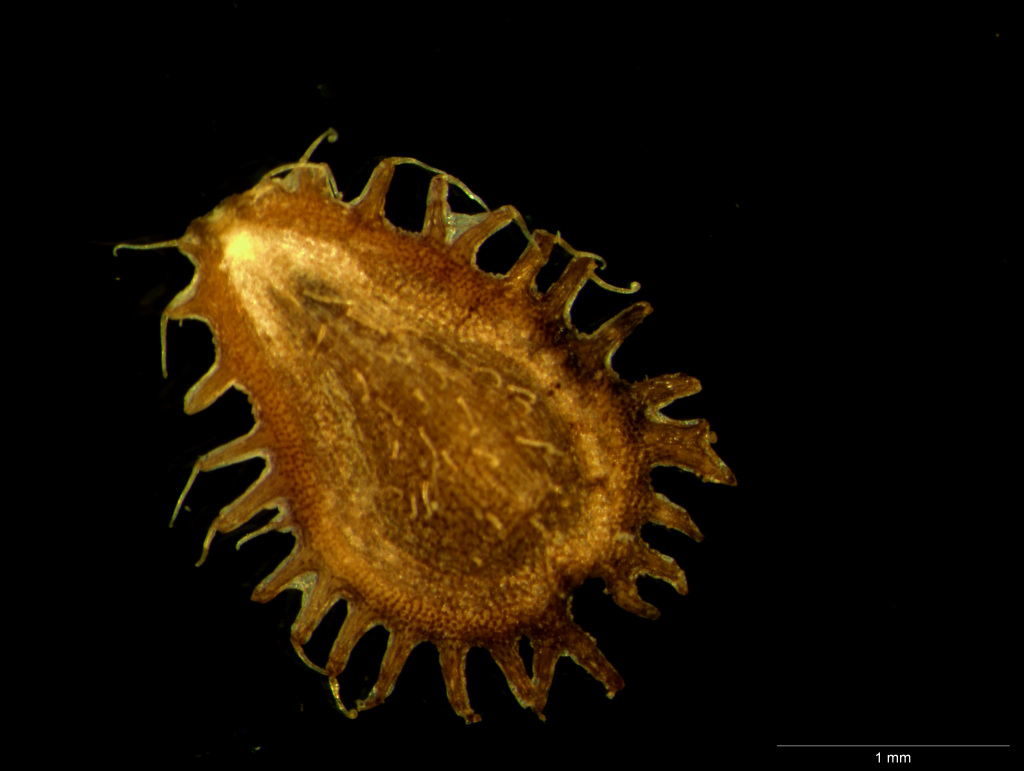Brachyscome perpusilla
(Steetz) J.M.Black Tiny DaisyAscending to erect glabrous annual, 3–12 cm high. Leaves entire and linear or (mostly) pinnatisect, 0.5–2.5 cm long, 1–15 mm wide, upper half 3- or more lobed, lower half with 2–6, usually shorter lobes, base dilated. Bracts 5–14, 1-seriate, c. equal, elliptic, obovate or ovate, 2–3.4 mm long, 1–2.4 mm wide, glabrous; ligules 0.7–1.3 mm long. Cypselas flat, obovate, 2.1–2.8 mm long, 1.3–1.7 mm wide (excluding divided part of wing-like margins), c. uniformly brown; lateral faces smooth, usually with scattered eglandular hairs; wing-like margins 8–17-lobed, the lobes 0.1–0.4 mm long, each terminating in an eglandular hair. Flowers Aug.–Nov.
LoM, MuM, Wim, VVP, VRiv, RobP, MuF, GipP, OtP, WaP, Gold, CVU, GGr, DunT, NIS, HSF, HNF. Also WA, SA, NSW, Tas. A widespread species recorded from the South Australian border to as far east as Briagolong and the Beechworth area. Occupies a diversity of habitats, e.g. Eucalyptus tereticornis woodland at Briagolong, and saltmarsh with Melaleuca halmaturorum at Jilpanger.
Willis (1973) followed Davis (1948) in recognising 2 varieties within the species and in referring most Victorian collections of B. perpusilla to var. tenella, with only some Victorian specimens considered to be 'closely approaching' var. perpusilla. As delimited here only 1 taxon occurs in Victoria and South Australia (other taxa occur in Western Australia). Furthermore, the type specimens of both var. perpusilla and var. tenella are of the same taxon.
Short, P.S. (1999). Brachyscome. In: Walsh, N.G.; Entwisle, T.J., Flora of Victoria Vol. 4, Cornaceae to Asteraceae, pp. 835–859. Inkata Press, Melbourne.
 Spinning
Spinning



